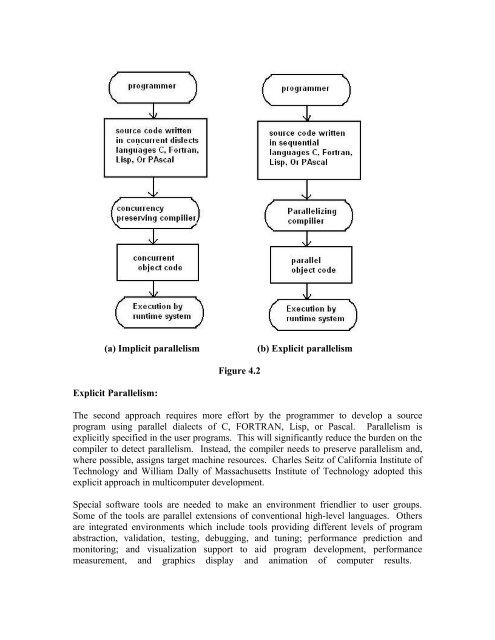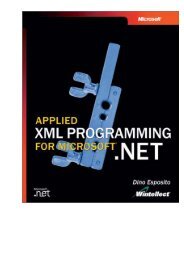UNIT-4: PARALLEL COMPUTER MODELS STRUCTURE - Csbdu.in
UNIT-4: PARALLEL COMPUTER MODELS STRUCTURE - Csbdu.in
UNIT-4: PARALLEL COMPUTER MODELS STRUCTURE - Csbdu.in
Create successful ePaper yourself
Turn your PDF publications into a flip-book with our unique Google optimized e-Paper software.
(a) Implicit parallelism (b) Explicit parallelism<br />
Explicit Parallelism:<br />
Figure 4.2<br />
The second approach requires more effort by the programmer to develop a source<br />
program us<strong>in</strong>g parallel dialects of C, FORTRAN, Lisp, or Pascal. Parallelism is<br />
explicitly specified <strong>in</strong> the user programs. This will significantly reduce the burden on the<br />
compiler to detect parallelism. Instead, the compiler needs to preserve parallelism and,<br />
where possible, assigns target mach<strong>in</strong>e resources. Charles Seitz of California Institute of<br />
Technology and William Dally of Massachusetts Institute of Technology adopted this<br />
explicit approach <strong>in</strong> multicomputer development.<br />
Special software tools are needed to make an environment friendlier to user groups.<br />
Some of the tools are parallel extensions of conventional high-level languages. Others<br />
are <strong>in</strong>tegrated environments which <strong>in</strong>clude tools provid<strong>in</strong>g different levels of program<br />
abstraction, validation, test<strong>in</strong>g, debugg<strong>in</strong>g, and tun<strong>in</strong>g; performance prediction and<br />
monitor<strong>in</strong>g; and visualization support to aid program development, performance<br />
measurement, and graphics display and animation of computer results.















